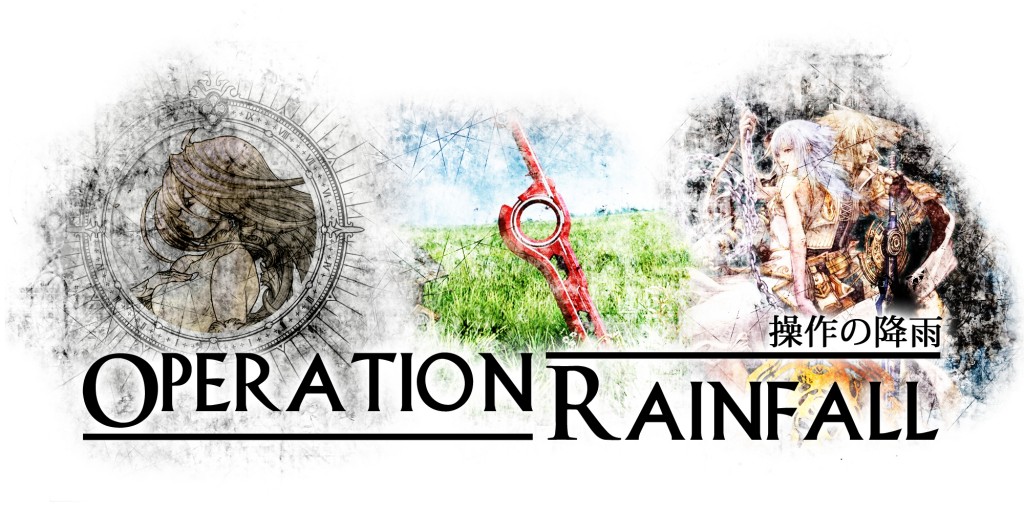
Xenoblade Chronicles from Monolith Soft for the Nintendo Wii has a unique history. Originally revealed at E3 2009, Xenoblade appealed to many JRPG (Japanese role-playing game) fans who were feeling deprived of good quality titles for the Wii. However, when Nintendo of America revealed no plans on releasing this critically acclaimed game in North America, there was an outcry from the gaming community. With no signs of Nintendo budging, these discontented gamers united and organized various kinds of petitions. The most notable of these groups is Operation Rainfall. While this organization was formed under the goal to convince Nintendo to localize many games, first and foremost on their list was Xenoblade Chronicles. At the beginning, I thought the endeavor was frivolous, but in December 2011, Nintendo announced on Facebook and Twitter that it would bring Xenoblade to North American shores. One can only guess what made Nintendo change its mind to allow a limited release of the game in April 2012, but I don’t think it would have ever occurred without Operation Rainfall’s efforts. Was Xenoblade worth all that effort? Yes it was.

Before Xenoblade’s release, it was a common complaint that JRPGs would be full of “fluff,” unnecessary and time-consuming tasks the player would have to do before progressing. Xenoblade did a spectacular job of remedying this JRPG curse. To start off, the game has some of the best pacing that I’ve ever seen implemented in a game. The transition between story and gameplay is practically seamless throughout. In addition, the game’s plot is well-written and full of twists to keep things unpredictable and interesting.
The Xenoblade universe is absolutely stunning, benefiting from a fantastic artistic direction which pushes the Wii’s graphical capabilities to its limits. For the uninitiated, the world of Xenoblade takes place on two colossal robots, the Bionis and the Mechnois, fossilized in the the midst of battle. Over time, life took root on these mechanical giants resulting in bustling civilizations, unique creatures, and diverse climates. As strange as that may sound, this setting is quite the spectacle. I often found myself looking at the otherworldly landscape in awe. The freedom to explore this beautiful world in Xenoblade not only contributed to a greater appreciation of the surroundings, it was also a godsend for the JRPG genre, something that Final Fantasy XIII made painfully obvious. To make things even better, traveling is not a chore in Xenoblade. Fast-travel is programmed into the game and convenient warping to landmarks scattered across the map is also incorporated. These landmarks also serve as automatic saving points, and you can freely save throughout the game by accessing the option on the menu. The player even has control of the game’s time, making it day or night as they please. This is very useful for quests that require finding creatures or people that only appear during certain times of day.

Xenoblade allows the player to choose from one of two control options, the Wiimote/Nunchuk combo or the Classic Controller. Following the recommendation of others, I used my Classic Controller Pro which compliments the game’s control mechanics very well. The battle system really shines in Xenoblade. It may look complicated at first, but it was actually very easy to get a hold of with the Classic Controller. The player can freely move the controlled character around the field during battle and that character will automatically attack the targeted foe if a fight has been initiated. Meanwhile, there are special attacks, known as arts, listed on the bottom that can be used with a press of the A button. Arts depend on your position relative to your opponent, meaning some work better if you attack from the side, behind, etc. Some can also inflict certain conditions upon the foe which can be paired up with your teammate’s arts to gain the edge in battle, especially once a chain attack has been activated. This introduces a strategic element which really adds to the enjoyment of the game.

The main character, Shulk, adds more depth to combat through his ability to foresee attacks. When an enemy is about to unleash a deadly hit, Shulk will receive a vision. After the vision has ended, there is a short amount of time before the deadly attack occurs. It is during this brief moment that an art can be used to counter the attack or warn a teammate so that they can use one of their own arts to prevent the vision from coming true. Speaking of battles, I should mention that battling is not the only way to earn experience points in this game. Experience points are also awarded whenever a new landmark is discovered, quests are completed, or for unlocking achievements.
Lastly, I can’t go on without mentioning Xenoblade’s great soundtrack. The voice acting should also get a nod for being charmingly British. These little details combined with a well-paced story, gorgeous world, and enjoyable battle mechanics created some of the finest work I’ve seen published for the Nintendo Wii. Xenoblade is one of the best, if not the best, JRPGs for the Wii. In fact, it is hands down one of the best JRPGs of this generation and should be a part of every Wii owner’s library of games.
By the way, another JRPG that Operation Rainfall has fought for, The Last Story, comes out on August 14th for the Wii. Considering it was made under the influence of Final Fantasy mastermind, Hironobu Sakaguchi, and has music by the infamous Nobuo Uematsu, it’s worth looking into. However, this game has a lot to live up to after Xenoblade’s wake.